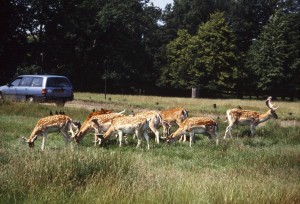Motorists in Wisconsin know that travelling along State 96 is not the safest drive in Wisconsin. Bounded by forests on both sides, drivers could expect that deer weighing anywhere from 125 to 300 pounds could leap from out of nowhere. But even if residents drive at less than 45 miles an hour, there is still no assurance that they will not engage in a collision with the antelope.
 In a state where there are 5 million registered vehicles and an estimated white tail population of at least 1 million, crashes are almost imminent especially during deer hunting season. And with Wisconsin motorists facing greater risks for crashes, Wisconsin auto insurance providers say they may have to increase premium rates to meet coverage needs.
In a state where there are 5 million registered vehicles and an estimated white tail population of at least 1 million, crashes are almost imminent especially during deer hunting season. And with Wisconsin motorists facing greater risks for crashes, Wisconsin auto insurance providers say they may have to increase premium rates to meet coverage needs.
It is a common knowledge among motorists that auto insurance costs rise with risk levels. That is why many Wisconsin residents are not only worried about their road safety during this hunting season. They have apprehensions regarding how the rising number of deer-vehicle collisions will affect statewide premium rates.
Last year, Wisconsin Department of Transportation recorded 15,821 vehicular crashes with deer. This places the odds of engaging in deer-vehicle crash in the state at 1 in 115, making Wisconsin the eight most dangerous place for such crash in the whole of United States.
Representatives from the Department of Transportation’s Bureau of Transportation Safety reminds motorists that October and November are peak seasons for deer activities so they are advised to expect the antelopes to cross streets and highways without being immediately seen.
It is breeding time for antelopes so motorists are told to watch out for deer chases since males run after females more often at a time when dusk comes earlier. Experts say those deer are well camouflaged and chasing activities could put them across the road before drivers have sufficient time to react. However, they advise motorists not to avoid frontal collisions with deer. Safety specialists explained that trying to get out of the way could cause vehicles to swerve, making the driver lose control and ending up in worse situations.
An Illinois-headquartered auto insurance giant servicing Wisconsin reported that claims due to such crashes from July 1, 2008 to June 30, 2009 have reached 43,392. Analysts say that is one of the major reasons why the insurance company, which provides services nationwide, has increased rates in Wisconsin this year.
Some experts say that the hunting season could help trim down the number of white tails, thus reducing risks for motorists. But others argue that it could only intensify deer activity and place motorists in danger.


